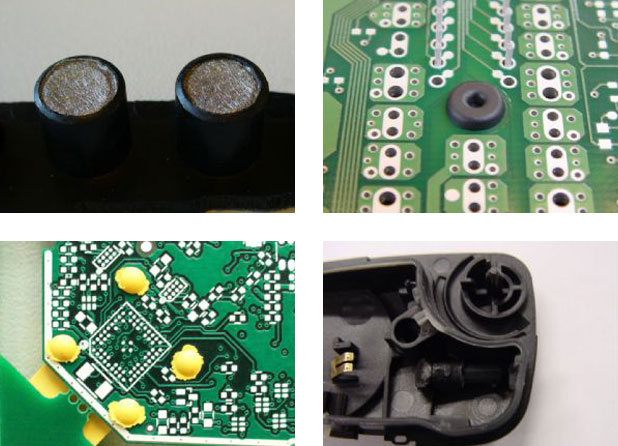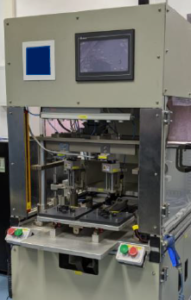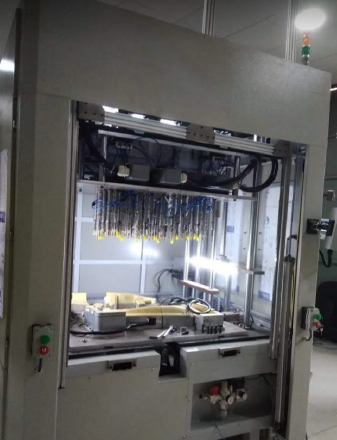Heat Stacking Machine
Heat Staking
Heat Staking is a pulsed-heat process to join two or more parts out of which one at least is made of plastic. The process is to deform the plastic material using heat and force at a set process time. The bond is made by partially de-forming the plastic part in order to fix the other.Heat Staking makes it easy to bond metal to plastic and is commonly used in high volume/low cost applications such as automotive, IT and consumer appliances.
Pick and place robots are commonly used in modern manufacturing environments. Pick and place automation speeds up the process of picking up parts or items and placing them in other locations. Automating this process helps to increase production rates. Pick and place robots handle repetitive tasks while freeing up human workers to focus on more complex work.
How pick and place robots work
Typically mounted on a stable stand, pick and place robots are positioned to reach different areas to perform work. They use advanced vision systems to identify, grasp and move objects from one place to another. With a variety of design options available, pick and place robots can be configured with various end-of-arm tooling options for use in different applications, such as assembly, packaging or bin picking. For example, pick and place robot systems may be used to pick up items for an order and place them in a box for packaging, or they may be used to pick up parts needed for assembly and move them to the next location.

Shaping Plastic Using Heat and Pressure
The plastic is deformed by heating it to a temperature above the glass transition temperature. Super-heated air or a thermode is used for this. Pressure is then applied to create the stake. After the stake has been formed, the plastic should be cooled down again below the glass transition temperature. Cooling is performed under constant pressure to ensure good fixation of the parts. Compressed air can be applied for cooling when a thermode is used.
Heat is used to facilitate the creation of the stake. Heat control is critical, especially for glass-filled plastics which often have a process window of less than 10 degrees Celsius. When the temperature is too high, the glass fibers come out of the plastic which leads to a rough surface and adhesion to the thermode. If the temperature is too low, the plastic will crack due to cold deformation.
.
Heat Staking Benefits:
Similar and dissimilar materials may be joined: metal to metal, plastic to plastic, metal to plastic
Accurate control operating within a small process window
Local heating resulting in no damage to surrounding materials
Processing of glass-filled materials
No mechanical vibration
Many heat-stake shapes possible through custom designed tools

1. Fuel Injector Cover


2. Door Trim

